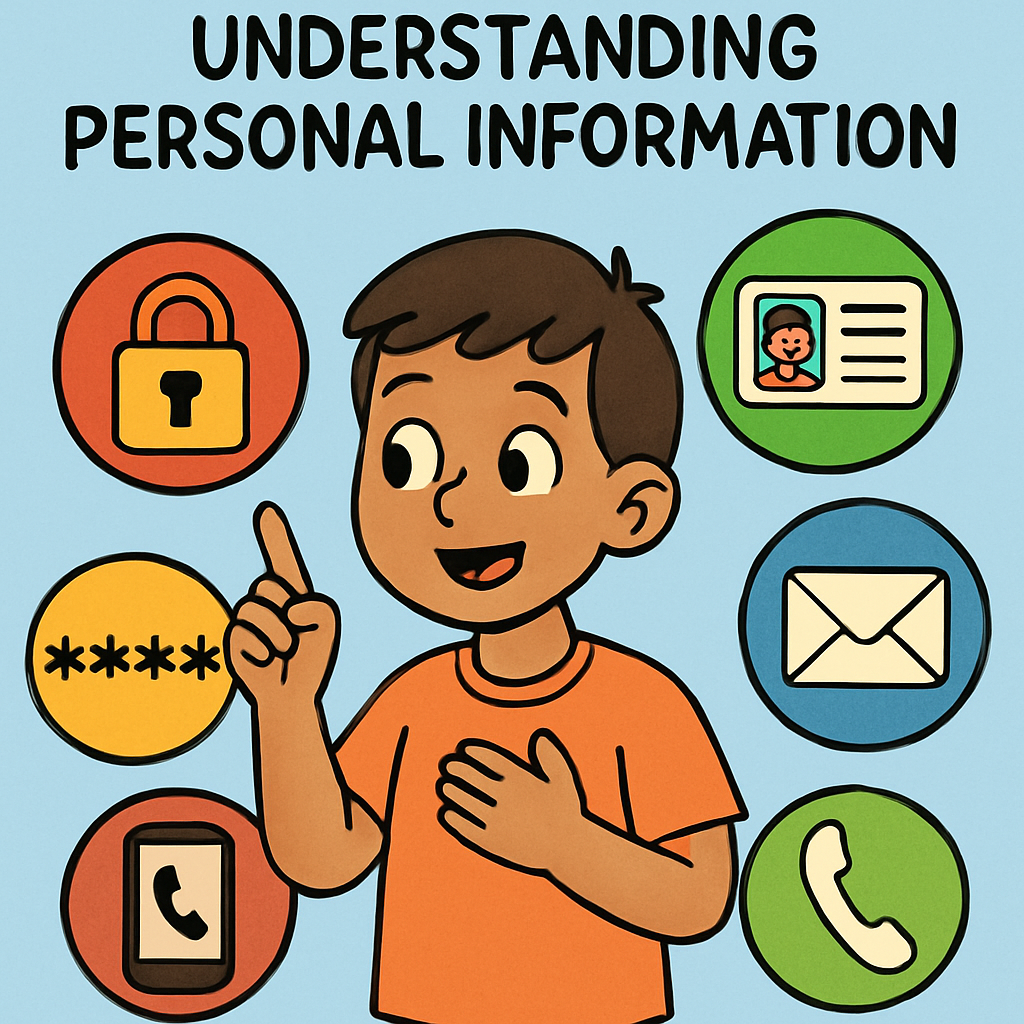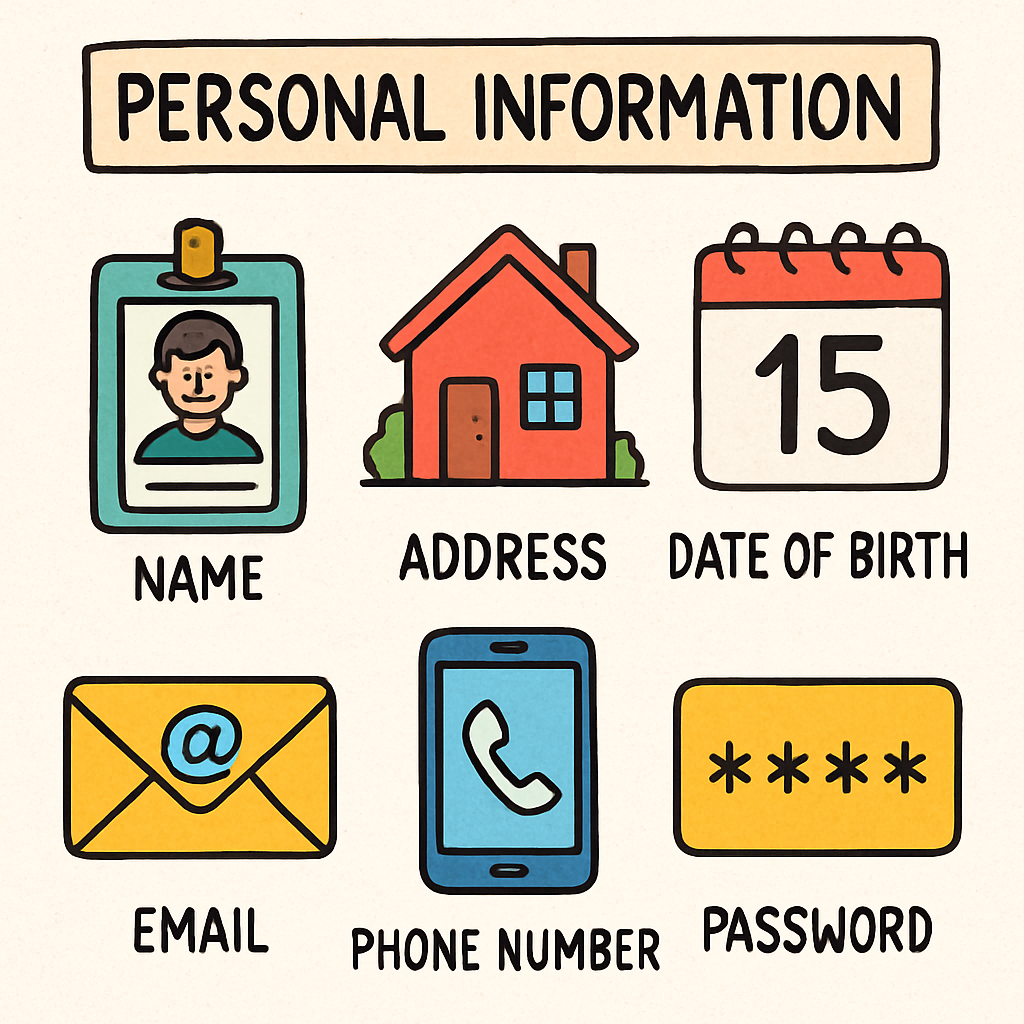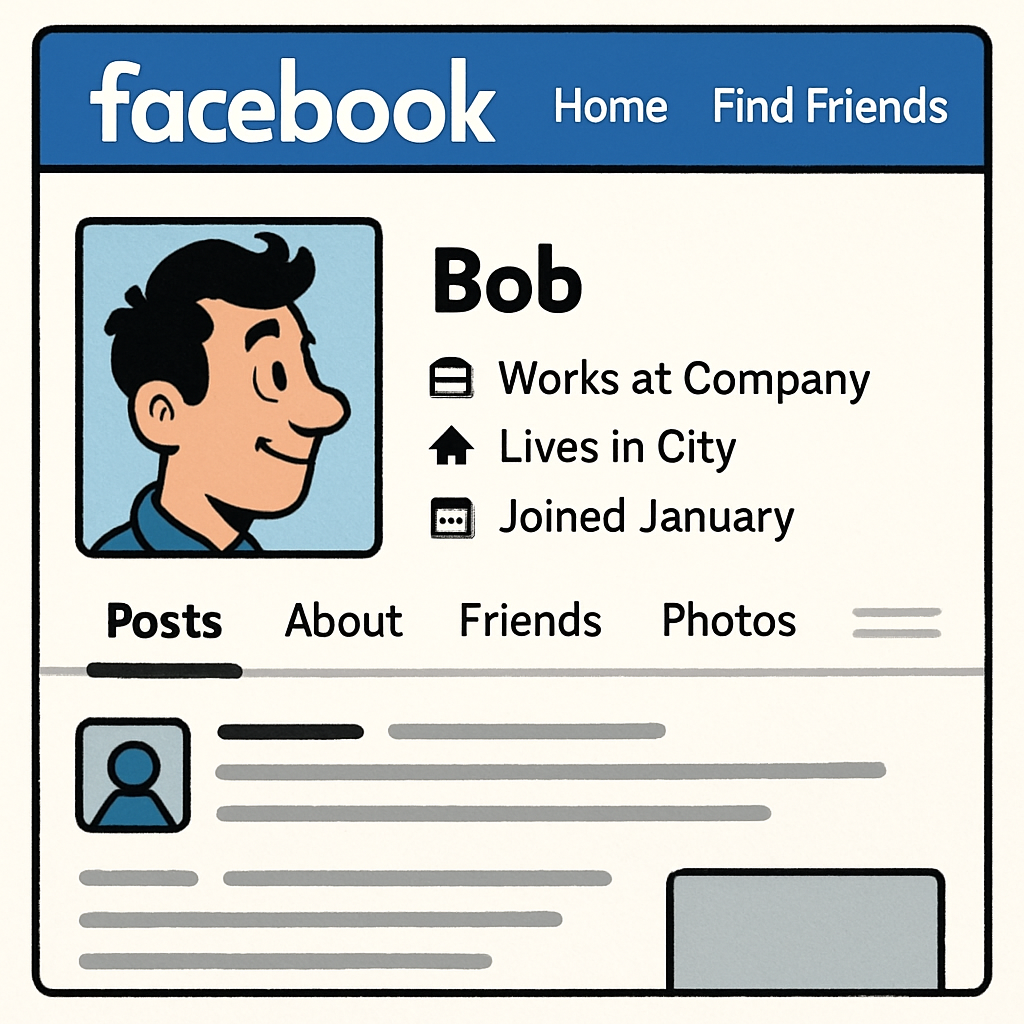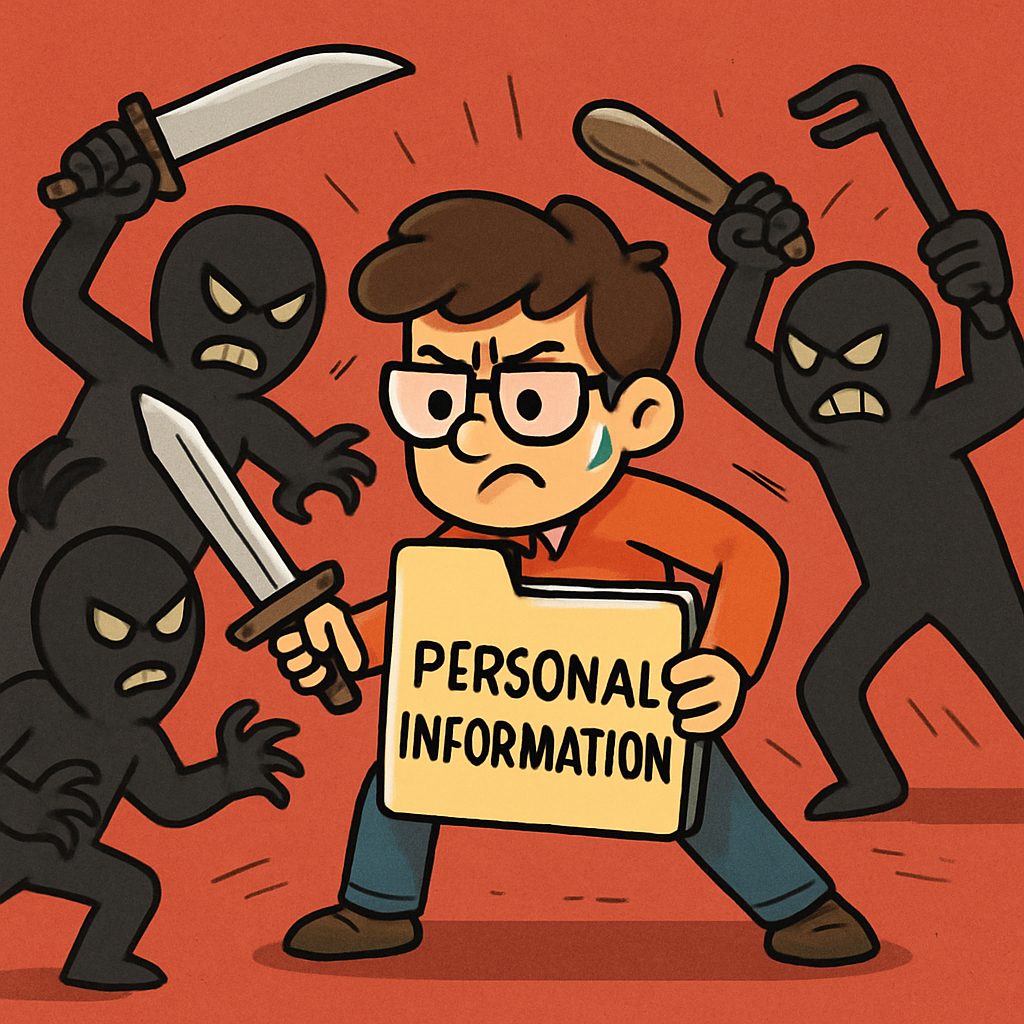 Welcome to this lesson. In this step, we will explore the concept of personal information in a structured manner.
Welcome to this lesson. In this step, we will explore the concept of personal information in a structured manner.
Personal information constitutes any data that can be utilised to identify an individual uniquely. This includes, but is not limited to, your full name, home address, telephone number, email address, date of birth, and school details.
Maintaining the confidentiality of such information is vital for personal safety. Sharing it indiscriminately, particularly with strangers online, may lead to risks such as identity theft or unwanted contact. Therefore, it is imperative to exercise caution and share personal details only with trusted individuals.
 In this step, we will examine various examples of personal information. Understanding these examples will help you recognise what details about yourself should be kept private to ensure your safety online.
In this step, we will examine various examples of personal information. Understanding these examples will help you recognise what details about yourself should be kept private to ensure your safety online.
Personal information includes any details that can identify you as an individual. Below is a list of typical examples, along with brief explanations of why they are considered personal:
 In this step, we will explore why personal information holds such significance and the reasons it must be protected. Understanding these aspects will help you appreciate the importance of safeguarding your details in everyday life, especially online.
In this step, we will explore why personal information holds such significance and the reasons it must be protected. Understanding these aspects will help you appreciate the importance of safeguarding your details in everyday life, especially online.
Personal information serves as a unique identifier that distinguishes you from others. It encompasses details such as your name, address, and date of birth, which collectively confirm your identity. This information is essential for various legitimate purposes, like enrolling in school or accessing services, but it becomes risky when shared inappropriately.
If unauthorised individuals gain access to your personal information, they could misuse it in harmful ways. Here are some key risks:
Protecting your personal information is crucial for maintaining your privacy and security. By sharing it only with trusted individuals or organisations, you reduce the chances of exploitation and ensure a safer environment for yourself. Always remember that once information is shared, it can be difficult to retract, so exercise caution at all times.
Take a moment to think about and write down two reasons why protecting your personal information is important to you. For example, 'It keeps me safe from strangers' or 'It prevents identity theft'.
 In this step, we will examine the relationship between personal information and the internet. You will learn about the unique challenges of sharing information online and why it is essential to exercise caution in digital environments.
In this step, we will examine the relationship between personal information and the internet. You will learn about the unique challenges of sharing information online and why it is essential to exercise caution in digital environments.
The internet allows people to communicate anonymously, making it easy for individuals to pretend to be someone they are not. This anonymity can lead to deceptive practices, where someone might appear friendly but have ulterior motives. As a result, sharing personal information online requires careful consideration to avoid potential risks.
When personal details are shared on the internet, they can be accessed by a wide audience, including strangers. Here are some key risks to be aware of:
To protect yourself, always approach online interactions with caution. Never share personal information with strangers, and verify the identity of individuals before disclosing any details. Remember, it is better to err on the side of caution to maintain your safety and privacy.
Take 5-10 minutes to reflect on your own online habits. Think about a time when you shared something online, such as a post on social media or a message in a game. Was it personal information? Write down what you shared, why you shared it, and any potential risks involved. Then, note one way you could make it safer next time. For example: 'I shared my address in a comment. Next time, I'll keep that private.'
 In this step, we will explore practical strategies to safeguard your personal information online. By following these guidelines, you can reduce risks and maintain your privacy in the digital world.
In this step, we will explore practical strategies to safeguard your personal information online. By following these guidelines, you can reduce risks and maintain your privacy in the digital world.
Protecting your personal information requires vigilance and good habits. Below are key recommendations, each explained to help you understand their importance:
In addition to the tips above, regularly review your online accounts for privacy settings and report any suspicious activity to a trusted adult or the platform's support team. Remember, protecting your information is an ongoing process that contributes to your overall safety.
Take a moment to create your own protection plan. Write down three specific rules you will follow to keep your personal information safe online. For example: 'I will always check privacy settings before posting.' Think about how these rules apply to your daily internet use.